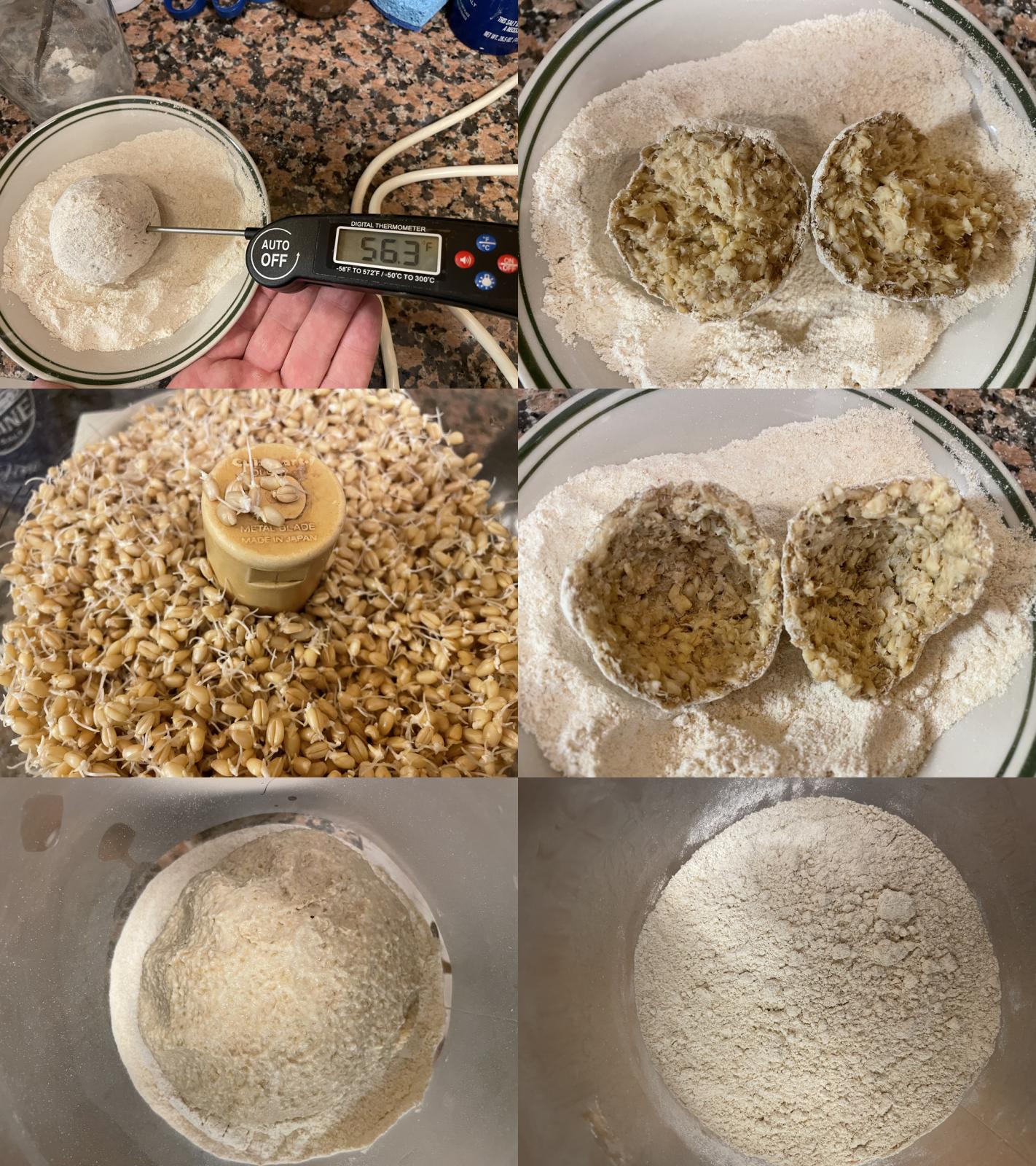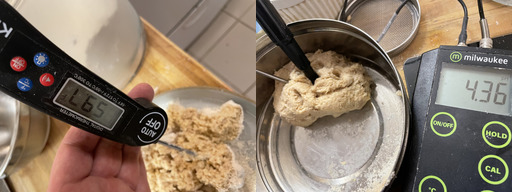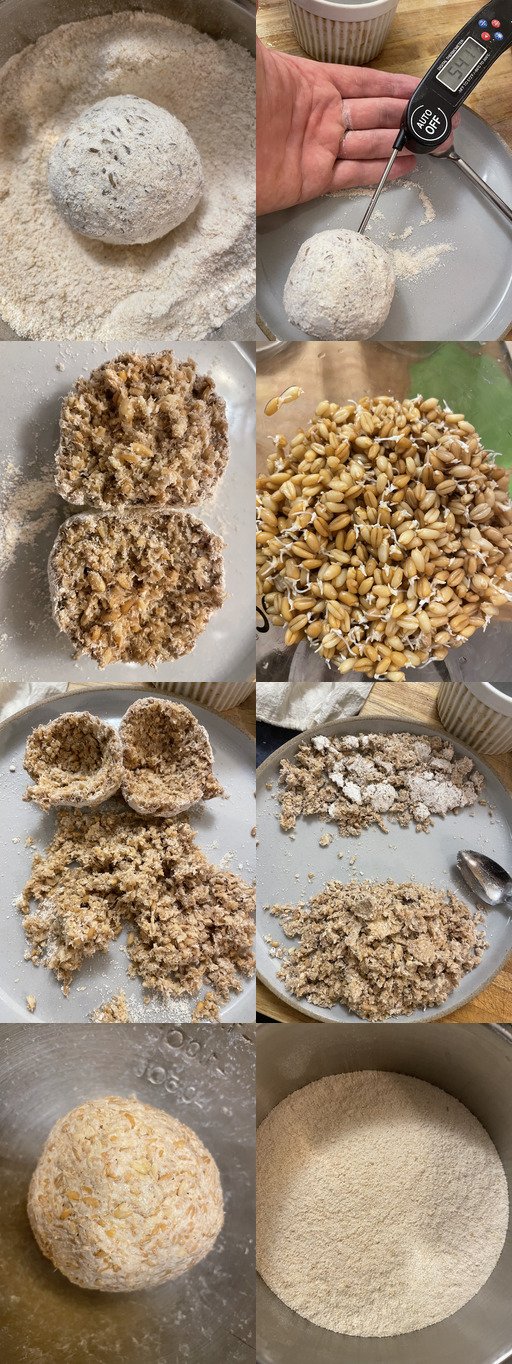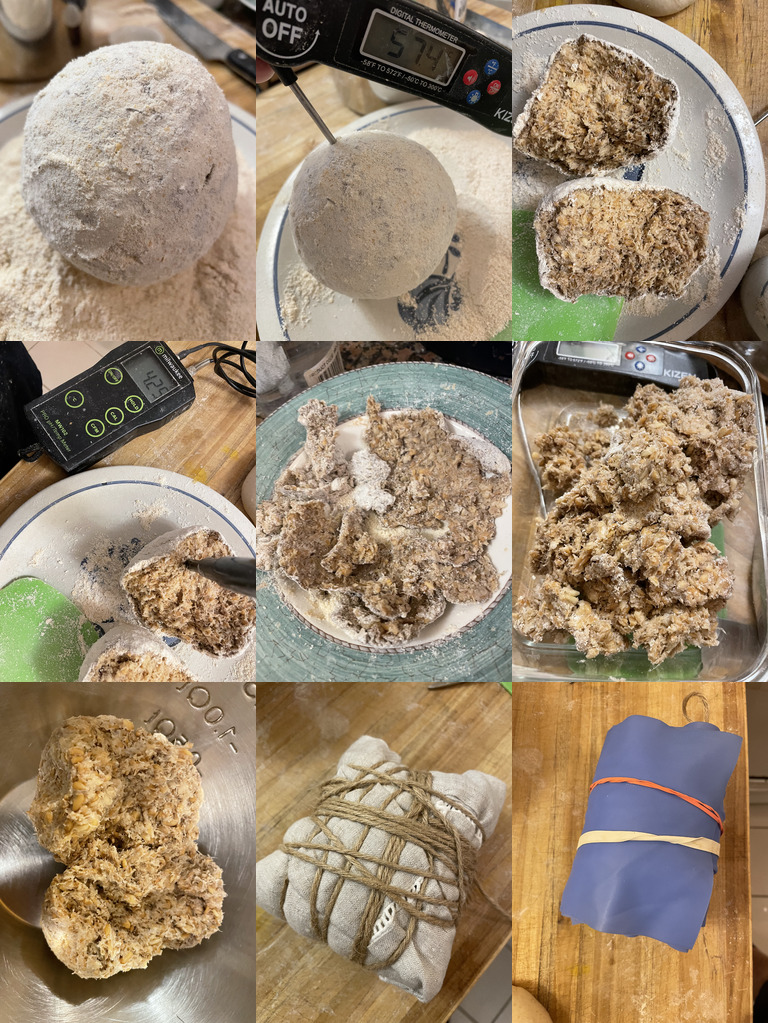A blog entry to maintain notes on my attempt to follow Omer Gevaert's original recipe for desem posted by mariana and described in detail HERE. I previously followed the recipe in Laurel's Kitchen Bread Book and am interested in comparing them.
I'm starting with some Sonora soft white wheat berries II have had sitting around unused for some time.
Soft White Wheat Desem (Take 1)
1/06/22 11:30 PM soak 300 g berries
1/07/22 11:00 PM strain berries and sit overnight in wine fridge
1/08/22 3:15 PM rinse berries, grind 1/4 of the berries coarsely in a blender, make a ball and place in weck jar covered in freshly milled flour, leave remaining berries in wine fridge to sprout

1/10/2022 6:30 PM: Remove ball from flour; separate and discard crusty rind; combine the soft inner portion of the dough ball with the newly sprouted wheat berries and pulse in a food processor to mash it up together taking care to minimize heat (max 75F) -- these sprouts were started in the wine fridge to kick-start the process and moved to the fridge to slow things down once the sprouts appeared (they felt very dry, so a few tablespoons of water was used to help the food processor break them down). I had concerns about the increased hydration, and started another one using a mix of hard red and white wheat berries.

1/13/2022 6:30 PM: Remove ball; peel off rind; temperature 60 F and pH 4.36; smells sugary sweet (like melon); stiff feed w/ flour only (started sprouts for subsequent feeds) @ 1:2 (estimated 60% hydration by feel); make a ball, dust in flour and bind with linen cloth + twine

I had concerns that I added too much water to make the soft white wheat berry pulp. It felt mushy and not like a stiff ball (see lower left ball on 1/10/2022 montage summary), so I restarted the experiment with a mix of hard red and white wheat berries (perhaps more typical) with the aim of lowering hydration this time around. I may continue the stiff and soft feedings with this one on alternate days to see how this one behaves.
Hard Red + White Wheat Desem (Take 2)
1/10/22 6:30 PM: Soak 300 g mix of hard red and white wheat berries
1/11/22 6:30 PM: Drain berries, make pulp from 1/4 of contents patiently without using additional water (I used a smaller BlendTec Twister jar this time instead of the food processor as the volume was a better match for pulping the smaller quantity of berries and the twister allows me to scrape berries off of the jar side while it was on); make a stiff ball and place in the wine fridge at 60 F covered in flour; place remaining berries bake in the wine fridge to sprout.
1/13/22 6:30 PM: Remove the dough ball from the wine fridge, extract the soft inner core and discard the rind; make a pulp from the remaining sprouted wheat berries and combine with the reserved young culture to make a stiff ball; place back in the wine fridge covered in flour at 60 F; soak new hard white wheat berries to make sprouts for subsequent chef/levain feeds

1/14/22 6:30 PM: Remove soaked wheat berries, drain and place back in the wine fridge to sprout for chef/levain feeds (this is a key step for the first stiff feeding of the culture after the 3-day incubation -- it takes a couple of days and I hadn't prepared properly in my first attempt documented above)
1/16/22 6:30 PM: Remove the dough ball from the wine fridge, extract the soft inner core and discard the rind (this one does smell like pickled apples as described mariana's writeup here!); blend sprouted hard white wheat berries with ample water to make a pancake batter and mix with the reserved culture and freshly milled flour to form a stiff ball; cover with flour, bind in linen napkin with twine and wrap the entire bundle under pressure with a wide elastic exercise band (I hold one end of the band on the floor with my heel, and roll up the linen desem package under pressure)

1/17/22 9:30 PM : Remove the dough ball from the wine fridge (60 F), extract the soft inner core and discard the rind; make a soft levain with freshly milled flour at 1:3 ratio; leave at room temperature until peak; initial pH @ 4.37; refreshed pH 1:3 @ 4.69

1/18/2022 8:00 AM: Soft levain peaks at about 2x and begins falling (approximately 6:00 AM); blend 200 g sprouted wheat berries with 100 g water to make a feeding pulp; mix starter with equal parts wet pulp and freshly milled flour in 1:3 ratio to form a stiff ball (estimated 65% hydration by feel) and place in wine fridge at 60 F; place the remaining pulp in fridge (< 40 F); pH of levain at mix = 4.27; temperature 70.6 F (21.2 C)
